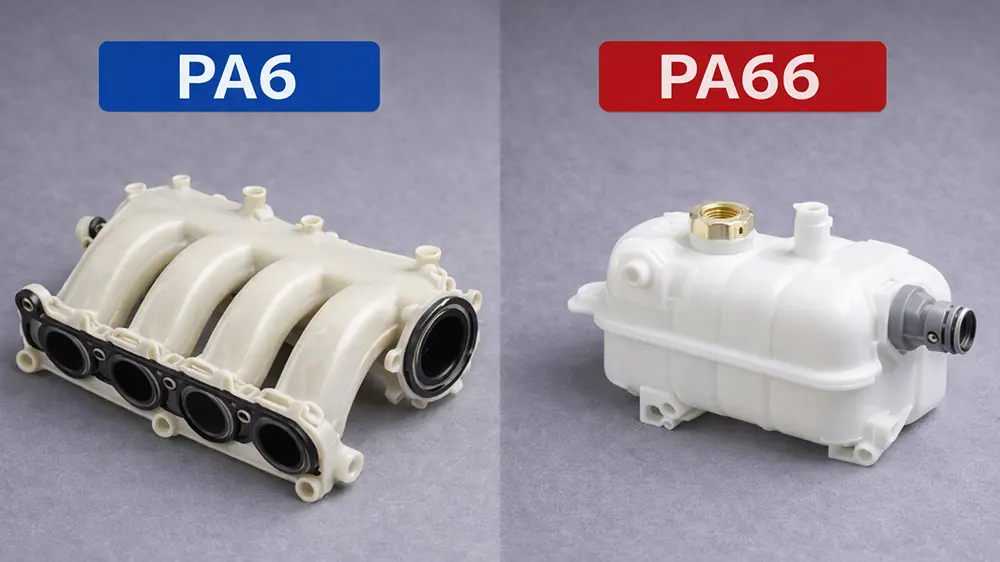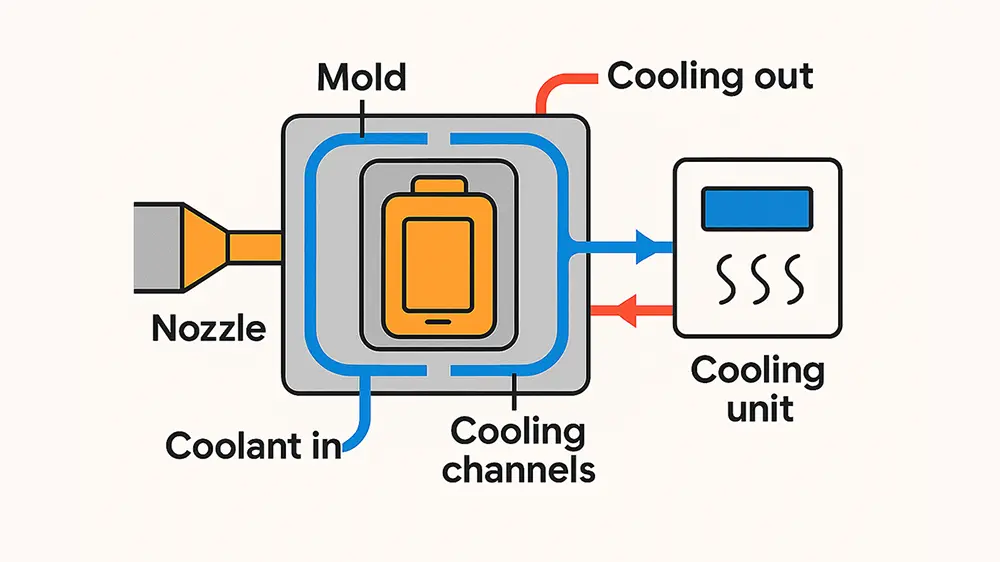The Industrial Revolution and the evolution of technology have triggered an unprecedented demand for high-precision parts and components. Think screws, bolts, and molds for injection molding. These parts have tight tolerances and are often manufactured using materials you can’t simply melt and mold into the desired shape.
This is why, we see an uptick in the usage of precise machining processes like CNC milling.
CNC milling has played a crucial role in shaping the world we know today. After playing a pivotal role in the sharp industrial growth we saw over the last few decades, CNC milling continues to hold center-stage in many manufacturing operations to this day.
What is CNC milling? In this blog, we are diving deep into it to answer your questions about CNC Milling. Stay tuned.
What is CNC Milling?
CNC (Computer Numeric Control) milling is a subtractive manufacturing process that leverages computerized controls to machine a workpiece into the desired shape.
The design requirements are programmed into the computer which then dictates the CNC machine components to carry out the milling process.
A cutting tool rotates at high speed over the workpiece and gives it the desired shape. The workpiece may either be stationary or mobile depending on the process.
CNC milling is known for its high precision and accuracy. These features are thanks to the process being mostly computer-controlled with minimal human intervention.
This does not mean that CNC milling has no limitations. The process can sometimes be more time-consuming, which is why it is often only used for one-time projects or with low or medium production demands.
Within CNC milling, you may come across various types of operations, which are mostly categorized individually based on how the cutting tool comes in contact with the workpiece.
Here’s a quick overview of four of these CNC milling operations:
Plain Milling
Plain milling is the most basic type of CNC operation which involves the work surface being parallel to the cutting tool’s axis of rotation. It is used to produce flat faces on the workpiece.
Face Milling
In this operation, the work surface is perpendicular to the cutting tool’s axis of rotation.
Angular Milling
In Angular Milling, the flat surface of the workpiece comes in contact with the cutting tool at an angle.
Form Milling
Form milling is used to make irregular surfaces like curves, contours, edges, etc on the workpiece.
The CNC Machine Components
The CNC machine is a comprehensive device that carries all the components needed to complete the machining operation. Here’s a quick overview of some of the most important parts of this machine:
Worktable
As you may have guessed from the name, the worktable is the surface where you mount the workpiece as the machine is prepared for the milling process.
Saddle
Saddle is one of the machine’s structural components. It offers support to the worktable and moves along the X-axis to facilitate horizontal movement of the workpiece.
Knee
Knee is another structural component that supports the saddle and facilitates the vertical movement of the work table and workpiece during the milling operation.
Spindle
Spindle is the rotating shaft that carries the cutting tool and facilitates its high-speed rotary motion.
Arbor
Arbor appears in horizontal CNC milling operations. It is a shaft that connects the cutting tool and the spindle.
Ram
Ram appears mostly in vertical CNC milling operations where it supports the spindle assembly in the machine.
The Machining Tools
Machining tools are essentially the cutting tools used to carry out the milling operations.
Interface
Interface is the link of communication between humans and the machine itself. It helps the machinists communicate how the milling operation needs to be carried out. Think of it like a control panel for inputting commands and controlling the milling process.
Steps Involved in CNC Milling
Understanding the general CNC milling process is not that difficult. Broadly speaking, all CNC milling operations include 4 basic steps. These are:
Step 1: Preparing a CAD Model
A CAD or Computer-aided Design is a digital representation of the final part. A CAD file is created before the CNC operation can begin. The product is designed virtually, with all its nuances, specifications, and tolerances within this CAD file.
Step 2: Converting CAD into CAM
CAM is short for computer-aided manufacturing. The interface of the CNC machine cannot understand the CAD file. Therefore, it is converted into a CAM file. This CAM file carries the machining instructions written in G-code or M-code. The computer reads these instructions, understands them, and then carries the process out accordingly.
Step 3: Machine Preparation
The machine is prepared for the milling operation once the CAM file is ready. During this stage, the workpiece is fixed onto the worktable, the worktable is adjusted according to the required design, and the cutting tool is fixed into the spindle so the milling operation can proceed.
Step 4: Machining
Once the machine is ready, the milling operation is launched via the interface. This prompts the machine into action which then carries out the milling operations according to the instructions it has received through the CAM file.
CNC Milling Applications
CNC milling finds application across various industries, particularly the ones that have tight tolerances and high precisional requirements.
Following are some of the most common industries that leverage CNC milling as one of the core operations:
Automotive
The automotive industry deploys different parts of varying sizes. CNC milling is leveraged for the production of many of these parts including the engine, gearboxes, axles, and motors.
Aerospace
Aerospace is one industry that operates with tight tolerances and very little room for mistakes. So, it is no surprise that a process as inherently precise as CNC milling appears frequently during the production runs for aerospace parts.
Medical Industry
CNC milling’s capability to work with biocompatible materials like titanium and produce parts with high precision has made it popular in the medical parts manufacturing industry where it helps with producing different devices like those used for implantation and other parts.
Consumer Electronics
The size of consumer electronics is shrinking rapidly and so, the demand for precisely manufactured small parts has increased. CNC milling helps create these highly-precise, small but critical parts that appear in many consumer electronics we use every day.
Common Materials You Can Use in CNC Milling
Generally, CNC milling is used when the size of the part is too small or the precision requirements are too high. In some cases, you may see a CNC machine in action when the product demands high precision on a material that may not run too well in other manufacturing processes.
Some of the materials that CNC milling helps machine include:
Stainless Steel
Stainless Steel is one material that is widely used in both industrial and domestic applications. The material is generally known for its hardness however, most of its grades feature good machinability.
This is why, Stainless Steel is widely machined and it’s not hard to find a machinist with experience in Stainless Steel milling.
Aluminium
Aluminum is another material that is often machined in a CNC mill. It is known for its excellent machinability, strength, and corrosion resistance. Aluminum is also lightweight, which has led to its popularity in the aerospace and automotive industry in recent years.
Titanium
Titanium is a biocompatible material and is often CNC machined to make medical parts and devices that come in contact with the human body. It may, however, be more difficult to machine.
Plastics
Plastics are not always injection molded, sometimes they are CNC milled as well.
There are many types of plastics that make good raw materials for a CNC milling operation. These include HDPE, Nylon, PEEK, Polycarbonate, etc.
Conclusion
CNC milling is known for its precision and hence plays a crucial role in industries and applications that work with tight tolerances and high precisional requirements.
The milling process is carried out on the CNC machine which comprises various parts including the Spindle that carries the cutting tool, the worktable that carries the workpiece, and an interface that helps machinists communicate with the machine.
You can carry out CNC milling operations on various materials including both metals and plastics. However, remember that given its inherent procedure, the CNC milling operation is not always recommended for bulk productions and is only suited for low to medium-sized production projects.





